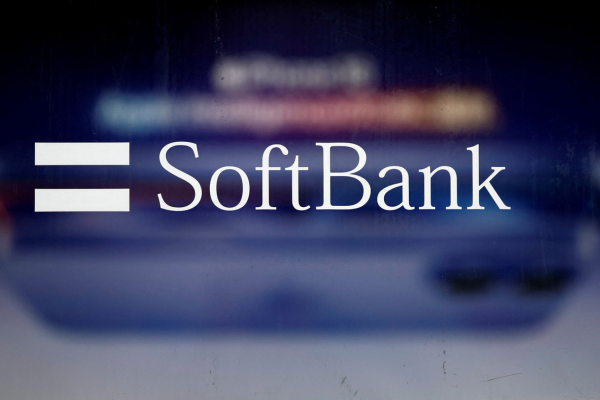Digital transformation: it’s a whole new ball game

CI&T’s founder Bruno Guicardi explains why business leaders should look to pickleball for inspiration
If you asked your friends a couple of years ago if they fancied a game of pickleball, you’d likely be met with blank faces. Over the last year, however, the game has become the fastest growing sport in the US, as people look for new ways to stay active whilst staying safe in the pandemic. The game, which combines aspects of tennis, badminton and ping pong, draws much of its popularity from its cross-generational appeal, with children facing off against grandparents on the quarter court.
Right now, you’re probably asking, “what does any of this have to do with the future of business and digital transformation?”
Pickleball requires players with experience in similar ball games to unlearn the way they have always played. The ball and bats perform dramatically differently to those in tennis or badminton. So going into a match assuming that your past expertise will be sufficient will only lead to a rude awakening.
This phenomenon is all too common in the world of business. C-suite executives with decades of expertise under their belt assume that their knowledge of the industry and past successes are all they need to formulate and execute a winning digital solution. However, they quickly find that the ball, i.e. customer base, does not behave like they expect, leading to a swing and a miss.
Similar to how we approach a game of pickleball, businesses need to adapt to the new realities they find themselves in. This means recognising that the relationship with their customers has evolved significantly over the past decade.
Digitisation has given consumers more options, more knowledge and ultimately more power. In this new ball game, genuine and effective digital transformation requires two things: comprehensive understanding of your audience and a willingness to go back to the drawing board.
So, what steps are involved to make this a reality?
Swing and a miss
Let’s consider this case: a major bank recently launched a new app in an attempt to reduce their customer service costs by transitioning away from call centres and personnel in their branches. Despite initially encouraging results, the bank saw that uptake was far less amongst its elderly customer base, who tended to use older mobile devices.
The problem was that the app had been created and rolled out without stopping to think about the nuances in the bank’s user base. The bank assumed that the pickleball ball would bounce just like a tennis ball. Instead, they should have adapted their play to the new game, and built a solution aligning carefully with their customers’ wants and need.
In the business world, solving this kind of problem requires an in-field, quantitative analysis of the target audience. By talking to these customers about their own experiences, we found that older customers tended to be too scared and confused to use the new app. The vast array of options, settings, functions and small fonts made things too complicated. This made them particularly afraid about making mistakes that might lead to losing their savings.
Customer-centricity is key to understanding the underlying issue – one which groups of younger, tech-savvy executives were unlikely to realise by themselves.
The ball is in their court
This is where “unlearning” comes in. Alongside customer-centricity, the most important principle to a successful digital solution is a willingness to start afresh. Forcing an old solution onto a customer is like trying to force a square peg into a round hole: it won’t work and you’ll have wasted your time.
The great thing about digital is that the sky’s the limit – you can be as creative as you like. Freeing employees from the traditional constraint of external approval processes and executive oversight is key.
This is why setting up a cross-functional team and providing them with the authority and agility to make decisions unilaterally is so important. This gives employees the autonomy to reconfigure their approaches quickly and effectively to serve their target audience’s needs.
In the case of the banking app, a whole new platform was created for the older customer base and designedaround their needs specifically. That meant simplicity and approachability: larger fonts, clear explanations, and minimal options.
The results? Four months after launch, the new app had over six million users. Traditionally, getting from an idea to here would take two years – but with this agile approach the team took just four months.
You can always improve your swing
If you don’t stop and take the time to adjust your swing, you’ll only be hitting balls into the net. This rings just as true in the business world as it does on the court. How then, can executives relearn how they’ve always played the game?
Step one is watching others involved. Rarely does an executive know every customer’s individual experience and pain points. It is far easier to put your ear to the ground and take in feedback from the coal face than it is to be consistently ingenious.
Step two is accepting feedback, however critical, and implementing positive change based on this. No matter how much passion and effort go into a project, it will all be in vain if it fails to address the customer’s needs.
These lessons are not only applicable when undertaking a landmark project or solution – they should be ingrained in every aspect of your business. By listening to and empowering your people, you will not only create a more positive and creative work culture, but you stand to benefit from the new experiences and wisdom they can bring to the table.
A year into remote working, we are already seeing management become more comfortable with this hands-off approach which empowers the employee. We should not lose sight of this progress and slip back into bad habits. Now is the time to embrace a new approach. Just like our openness to embracing and learning the rules of pickleball, our approach to transformation initiatives must be one of open ears and open minds.
Bruno Guicardi is co-founder and president of CI&T, a digital transformation partner for the world’s biggest companies. For over 25 years, CI&T has been a trusted partner in helping Fortune 1000 companies drive growth and continuous innovation across business, people, and technology.
Main image courtesy of iStockPhoto.com

Business Reporter Team
You may also like
Most Viewed
Winston House, 3rd Floor, Units 306-309, 2-4 Dollis Park, London, N3 1HF
23-29 Hendon Lane, London, N3 1RT
020 8349 4363
© 2025, Lyonsdown Limited. Business Reporter® is a registered trademark of Lyonsdown Ltd. VAT registration number: 830519543





